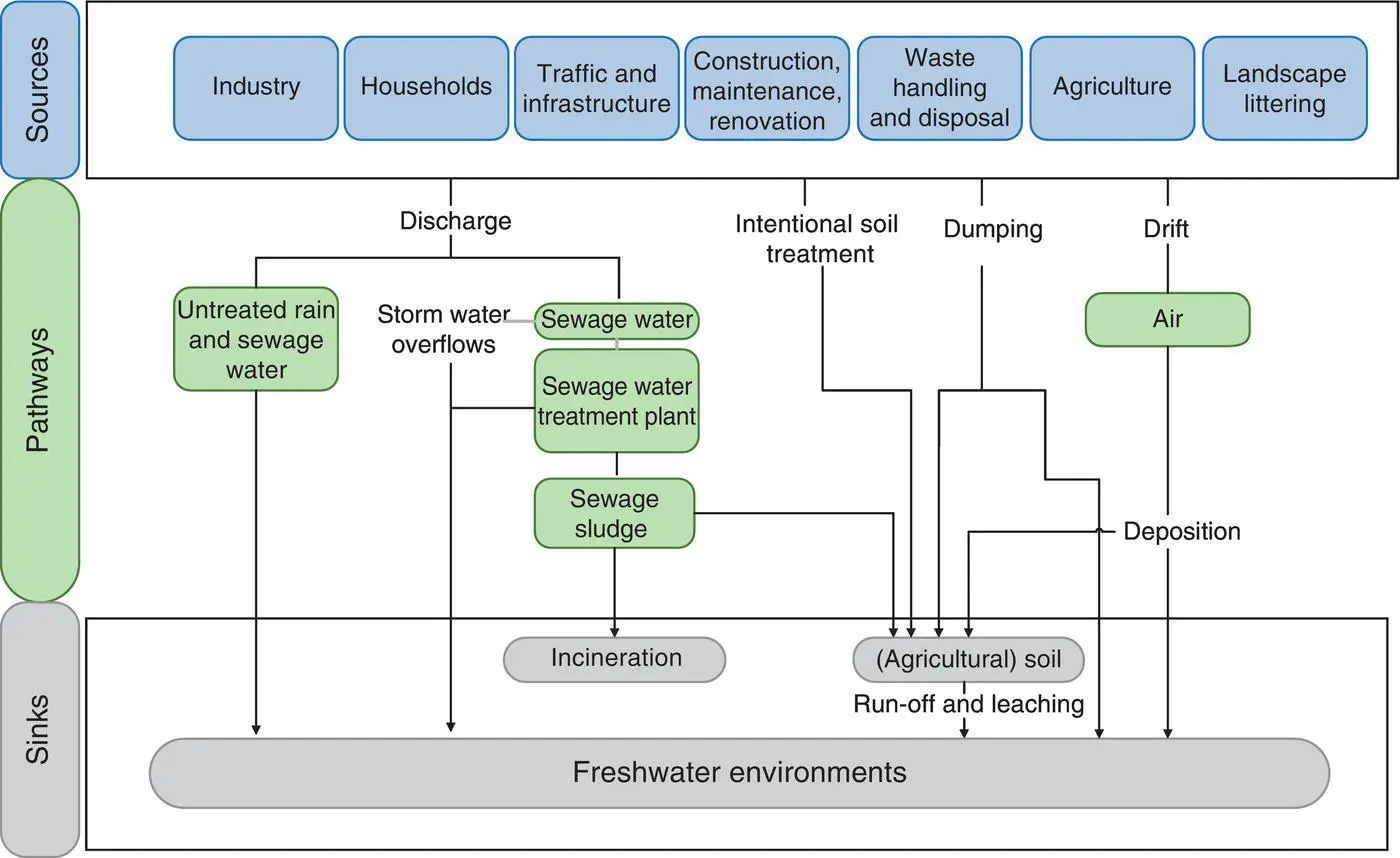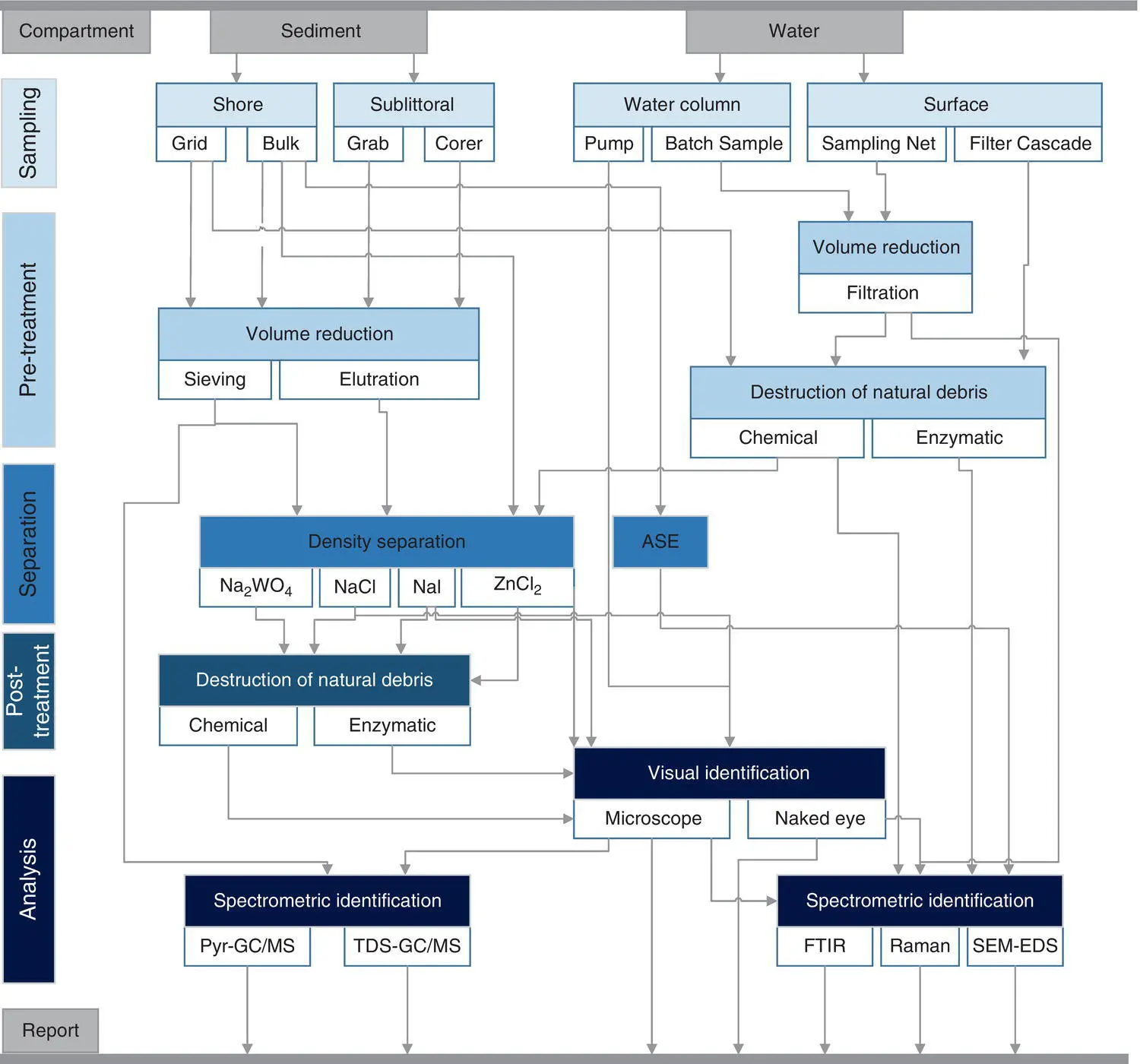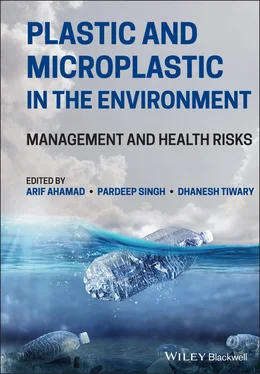Plastic and Microplastic in the Environment
Здесь есть возможность читать онлайн «Plastic and Microplastic in the Environment» — ознакомительный отрывок электронной книги совершенно бесплатно, а после прочтения отрывка купить полную версию. В некоторых случаях можно слушать аудио, скачать через торрент в формате fb2 и присутствует краткое содержание. Жанр: unrecognised, на английском языке. Описание произведения, (предисловие) а так же отзывы посетителей доступны на портале библиотеки ЛибКат.
- Название:Plastic and Microplastic in the Environment
- Автор:
- Жанр:
- Год:неизвестен
- ISBN:нет данных
- Рейтинг книги:5 / 5. Голосов: 1
-
Избранное:Добавить в избранное
- Отзывы:
-
Ваша оценка:
- 100
- 1
- 2
- 3
- 4
- 5
Plastic and Microplastic in the Environment: краткое содержание, описание и аннотация
Предлагаем к чтению аннотацию, описание, краткое содержание или предисловие (зависит от того, что написал сам автор книги «Plastic and Microplastic in the Environment»). Если вы не нашли необходимую информацию о книге — напишите в комментариях, мы постараемся отыскать её.
Thought-provoking discussions of the challenges posed by—and potential solutions to—plastic and microplastic pollution Plastic and Microplastic in the Environment: Management and Health Risks,
Plastic and Microplastic in the Environment
Plastic and Microplastic in the Environment: Management and Health Risks
Plastic and Microplastic in the Environment — читать онлайн ознакомительный отрывок
Ниже представлен текст книги, разбитый по страницам. Система сохранения места последней прочитанной страницы, позволяет с удобством читать онлайн бесплатно книгу «Plastic and Microplastic in the Environment», без необходимости каждый раз заново искать на чём Вы остановились. Поставьте закладку, и сможете в любой момент перейти на страницу, на которой закончили чтение.
Интервал:
Закладка:

Figure 1.2 (a) Degradation and fragmentation of plastic under environmental factors; (b) and (c) the cracks seen at the surface are caused by photochemical degradation
Source: Ter Halle 2016, p. 15 / With permission from American Chemical Society.

Figure 1.3 SEM of typical fibers: (a) polyester‐cotton blend; (b) polyester; (c) acrylic
Source: Napper 2016, p. 03 / with permission from Elsevier.
1.2.2.2 Microplastics from Textile and Domestic Washing
Fibers from synthetic textiles are another source of secondary MPs in the environments ( Figure 1.3). Synthetic fibers are made from petroleum through polymerization, polycondensation, or polyaddition processes (Astrom 2016). In 2010, total synthetic fiber production was 49.6 million tons, accounting for 60% of the world's fiber production (Essel et al. 2015). Synthetic textiles can be used in clothes, furniture, geotextiles, cloth, sports, packing, toys, construction, and agriculture. Shedding of textiles relies on the textile types, the yarn and texture type, and the fiber types involved. According to Astrom (2016), most fibers are shed from synthetic fleece and microfleece. A synthetic fleece coat can shed about 1900 fibers with each wash (Browne et al. 2011). These authors also concluded that using detergents causes more shedding compared with using only water. The average size of fibers ranged from 5.0 to 7.8 mm in length, and 11.9 to 17.7 μm in diameter (Napper and Thompson 2016). Compared to other MPs detected in environments, such as pellets or fragments, fibers have a higher surface‐to‐volume ratio; therefore, they can attract more chemicals than other MPs (Astrom 2016).
1.3 Pathways of Microplastics into Freshwater Environments
MPs can enter freshwater environments by several pathways due to the bulk of plastic wastes in the environment ( Figure 1.4). A pathway of MPs entering may be important in one region but less important in another (Lambert and Wagner 2018). For example, MPs applied in personal care products are likely more important in urban than agricultural regions (Lambert et al. 2014). Potential environmental release pathways of MPs can be separated by their primary or secondary sources.
A pathway of primary MPs input to freshwater environments has been found through WWTPs and the utilization of sludge from WWTPs to agricultural lands. Previous studies depicted that 90% of MPs in domestic wastewater are retained within sludge (Magnusson and Norén 2014; Talvitie and Heinonen 2014). In Europe, sewage sludge is normally composted to produce agricultural fertilizer as well as dispose of the sludge to land. The EU countries apply about four to five million tonnes of sludge to agricultural lands, annually (Willén et al. 2017). MPs that cannot be removed in the treatment process will reach the freshwater environments via effluent (Horton et al. 2017). Another pathway of primary MPs could be from the release of industrial products or processes.

Figure 1.4 Possible exposure pathways of MPs into freshwater environments.
Routes of secondary MPs into freshwater environments are mainly from improper management of plastic wastes. This includes release during collecting, transporting, processing, and landfilling of solid waste. Another route could be the runoff of wastes through drainage canals from agricultural land. Plastic wastes on roads such as vehicle debris, tire wear particles, or fragments of road‐marking paints could overflow with storm water into the freshwater environments (Eriksen et al. 2013). Lighter plastic wastes may be transported into freshwater environments by wind (Zylstra 2013), and synthetic fibers could be carried and accumulated by atmospheric fallout (Dris et al. 2015).
1.4 Microplastic Analytical Methods in Freshwater
Until now, there has been no certain methodology for sampling and analysis of MPs in freshwater. Most researchers adopted methods from the marine environment, with modifications. However, homogeneous and standard methods for the determination of MPs are missing. This fact hampers comparability between studies both in freshwater and marine environments. Different techniques for sample collection, preparation, and analysis of MPs are summarized in Figure 1.5.
1.4.1 Sampling of Microplastic
1.4.1.1 Water Samples
As reported in previous studies, the abundance of MPs in water samples is lower than that of sediment samples (Ta and Babel 2020b). Thus, a large quantity of water is usually collected to acquire a representative sample. Volume reduced samples were commonly applied for the sampling of surface water. Until now, most studies used manta trawls or plankton nets to collect water samples. Different mesh sizes of these nets are used, ranging from 50 to 3000 μm (Tan et al. 2019; Zhang et al. 2015), while 333 μm is the most commonly used in all studies (Anderson et al. 2017; Free et al. 2014; Su et al. 2016; Ta and Babel 2020b; Wong et al. 2020). Flow meters are attached to plankton nets or manta trawls to determine the filtered water volume. This helps to normalize the number of MPs to the volume of filtered water. Another technique is the measurement of the sampling area by the Global Positioning System (GPS). Thus, results are presented as the number of MPs per surface area. Trawling speed depends on the water velocity or wave action, but usually ranges from one to five knots (Ta and Babel 2020a; Tan et al. 2019; Wong et al. 2020). Another sampling method is direct filtration of water through sieves or by the collection of batch samples (Crew et al. 2020; Yan et al. 2019). In this method, a smaller water volume can be collected, thus the sample representability is reduced (Wang et al. 2017).

Figure 1.5 Techniques reported in the literature for identifying MPs in sediment and water samples.
1.4.1.2 Sediment Samples
The sampling of sediment samples can be separated into the collection from the shoreline and bottom of the river or lake. For shore sediments, sampling strategies are transected sampling perpendicular, random sampling, and sampling in single squares or parallel to the water. Most studies applied the grid sampling method with depths of 2–5 cm on the surface layer (Jiang et al. 2019; Klein et al. 2018). Frame and corers are usually used to determine the sampling area. Non‐plastic tools such as scoop, trowels, or shovels, and non‐plastic sampling vessels are required (Alam et al. 2019; Jiang et al. 2019; Peng et al. 2018). Bottom sediment from the riverbed or lakebed can be carried out with grab samplers such as Ekman or Van Veen grabs or corers (Alam et al. 2019; Fan et al. 2019; Ta et al. 2020c; Wang et al. 2017). The sediment samples collected by grab methods are usually disturbed, therefore this is suitable for surface layer (top 5 cm) or bulk sampling. Conversely, sampling by cores allows determining MP depth profiles and undisturbed surface and depth layers. Nevertheless, the number of samples that can be collected is limited. According to Dris et al. (2018), river bottom sediments are mostly collected by grabs, while corers or grabs are used for lake bottom sediments. The number of MPs is usually normalized to the sediment volume or weight, and sampling area.
Читать дальшеИнтервал:
Закладка:
Похожие книги на «Plastic and Microplastic in the Environment»
Представляем Вашему вниманию похожие книги на «Plastic and Microplastic in the Environment» списком для выбора. Мы отобрали схожую по названию и смыслу литературу в надежде предоставить читателям больше вариантов отыскать новые, интересные, ещё непрочитанные произведения.
Обсуждение, отзывы о книге «Plastic and Microplastic in the Environment» и просто собственные мнения читателей. Оставьте ваши комментарии, напишите, что Вы думаете о произведении, его смысле или главных героях. Укажите что конкретно понравилось, а что нет, и почему Вы так считаете.












